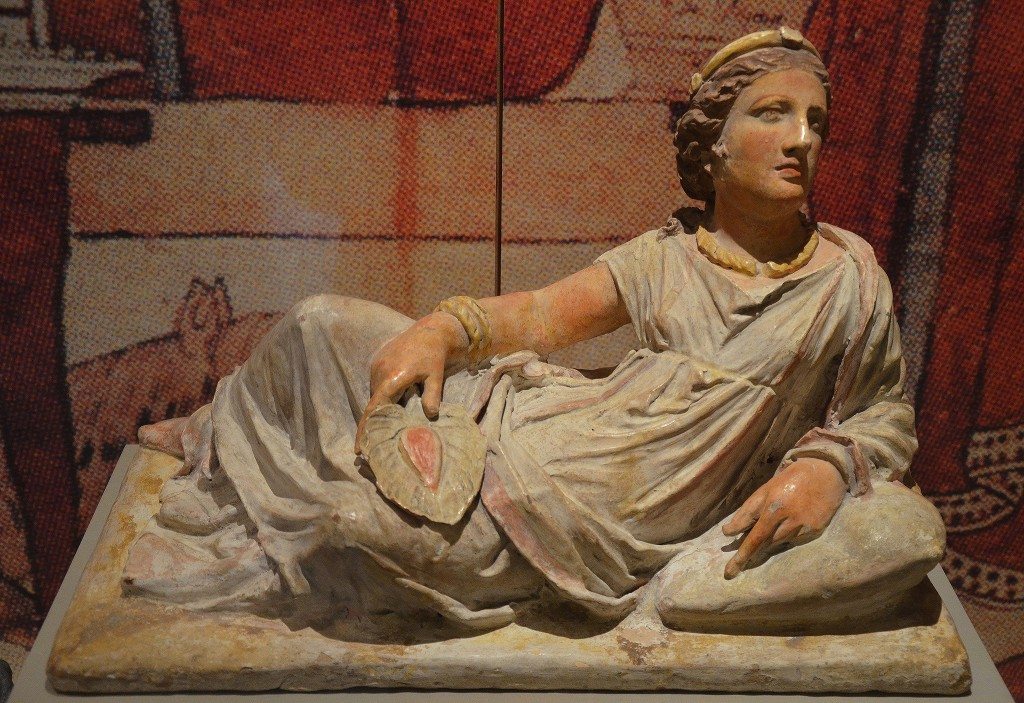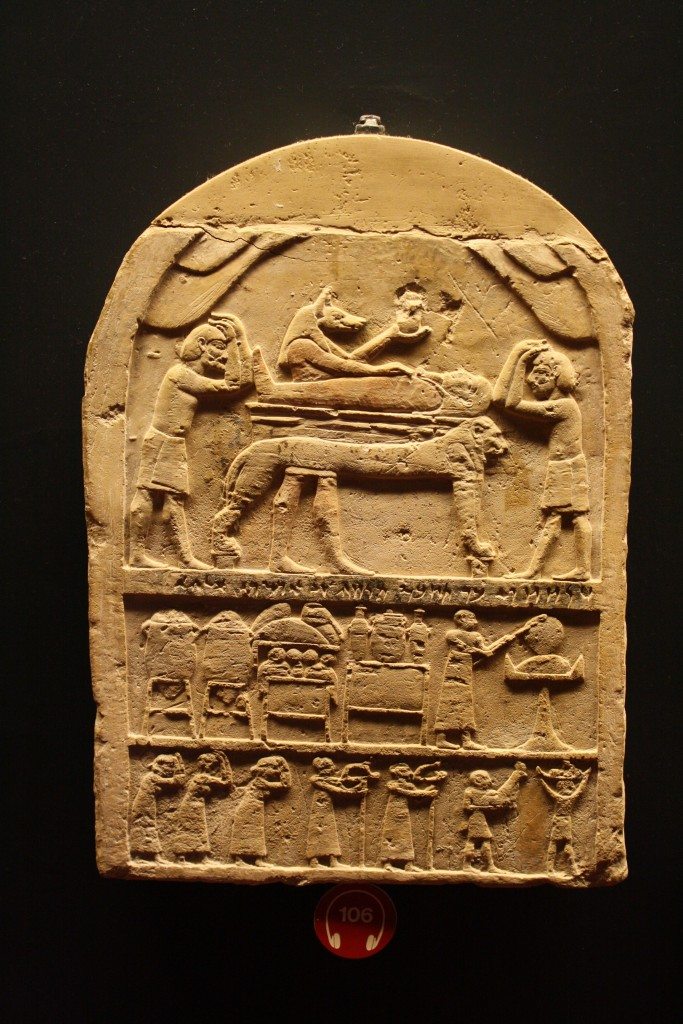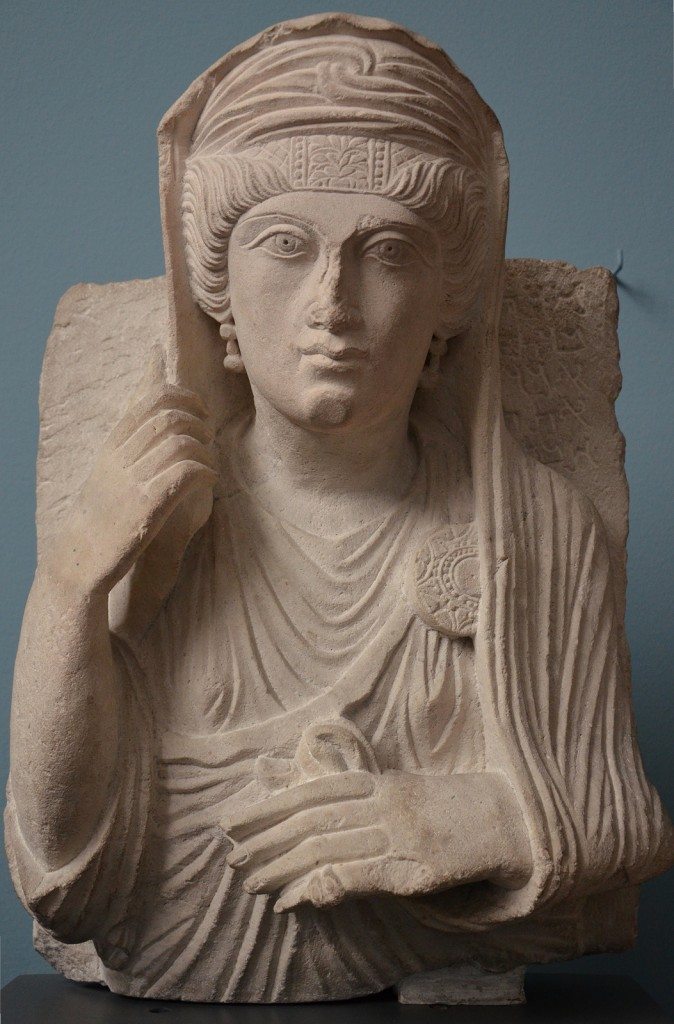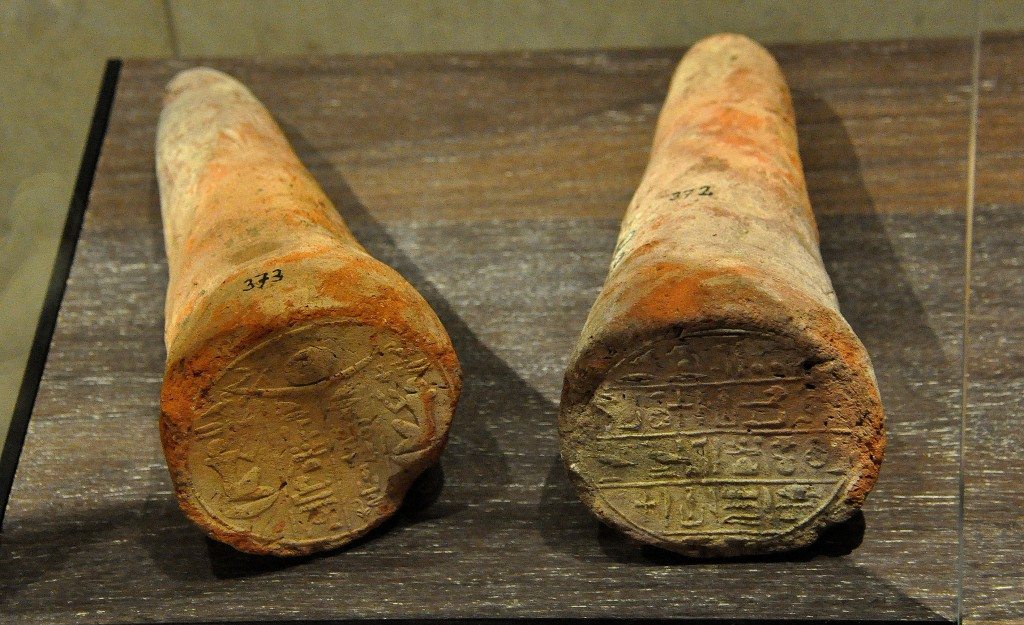This post is part of a series of image posts Ancient History et cetera will post each month. Today, it is all about ancient funerary art!
All ancient cultures had varying and extensive beliefs about life and death. They also had elaborate burial rituals performed at death. These rituals ensured safe travel to the afterlife, so that the dead are remembered forever.
By the sixth century CE, ancient Greek concepts of the afterlife and ceremonies associated with burial were well established. They believed that when one died they went to the realm of Hades and his wife, Persephone. Greek burial rituals were usually performed by the women of the family and involved a prothesis (laying out of the body) and the ekphora (funeral procession). The most common forms of Greek funerary art are relief sculpture, statues, and tall stelai crowned by capitals, and finials.
Similarly, the Romans performed a funeral procession for their dead which would end in a columbarium. These columbarium, depending on the person’s station in life, could be quite elaborate. Roman Sarcophagi also tend to be quite beautiful and visually tell us Roman values. (Whereas, epitaphs provide literary insight into Roman values.) Roman funerary art also includes death masks, tombstones and sculptural reliefs.
In ancient Greece and Rome, the Etruscans were identified as a culture of their own. Etruscans burial practices resulted in many items of funerary art such as: sculpture, sarcophagi, decorative cinerary or burial urns and tombs.
The various Egyptian burial rites, I am sure most have heard about! Rather than go into detail about Egyptian beliefs, I think everyone can agree that their practices resulted in a mass of items which could be classified as funerary art.
Funerary urn lid of an Etruscan woman

Painted terracotta funerary urn lid of an Etruscan woman, from Chiusi, ca. 150-120 BCE (Badisches Landesmuseum Karlsruhe, Germany). Photographer: Carole Raddato
Egyptian Funerary Stele

An Egyptian funerary stele of Ankh Hapy with an aramaic inscription. Limestone, from Memphis, 27th Dynasty, 525-404 BCE. (Vatican Museums, Rome). Photographer: Mark Cartwright
The Lady Marti Relief

The lady Marti, a funerary portrait of a woman from Palmyra, c. 170-190 CE (Ny Carlsberg Glyptotek, Copenhagen). Photographer: Carole Raddato
Objects from Tomb of Thutmose IV

From the tomb of Thutmose IV, 14th century BCE, including amulets in the form of the ankh, symbol of life or everlasting life. Two large amulets in the shape of an ankh were found among shabti figures and other funerary objects from the tomb of Thutmose IV (KV 43). Metropolitan Museum of Art, New York. Photographer: Keith Schengili-Roberts
Funerary Cones of Basa

Two ceramic funerary cones of Basa, the high priest of Min of Coptos and mayor of Thebes. From Western Thebes, modern-day Egypt. Saite period, 26th Dynasty, circa 600 BCE. (State Museum of Egyptian Art, Munich, Germany). Photographer: Osama Shukir Muhammed Amin FRCP (Glasg)
Columbarium 3 at Vigna Codini: View of Double Staircase

This largely first-century CE columbarium in Rome, discovered in 1852 CE, was once lined with marble. It is very ‘up-market’ in that the epitaphs are all preoccupied with status, even though the deceased are slaves and freed slaves. It was operating into the second century CE. Photographer: Francesca Santoro L’hoir
For more information on the funerary art, see here.
